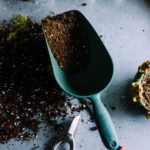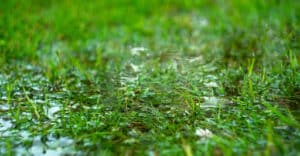
Out of sight, out of mind – right? Not quite the case when it comes to your septic system.
Though your pipes, drains, and tanks lay neatly tucked away, they remain vital parts of a larger system that works to ensure your household is running smoothly, and therefore requires the same care and maintenance as your other everyday appliances.
Without proper care and maintenance, your septic system becomes increasingly susceptible to damage. Septic damage often makes itself known by way of messy leaks and unpleasant overflow, but what causes the damage in the first place?
Here are five common causes of septic damage to be aware of:
Improper Disposal of Non-Biodegradable Materials
“What do non-biodegradable materials have in common with (most!) canceled public figures?
They’re problematic.”
Non-biodegradable items such as sanitary wipes, paper towels, band-aids, cotton swabs, and kitty litter are all bad news for your septic system. These materials don’t easily break down and are likely to collect, which can cause troublesome clogs as well as messy backflow.
If the material you’re considering flushing isn’t biodegradable, or if it falls on our list of top five things to stop putting down your garbage disposal, we urge you to consider proper or alternative methods of discard; for example, some food waste materials that are bad for your garbage disposal can be repurposed into compost!
Exceeding Capacity
Many a good septic system has fallen victim to overuse, be it from general water inefficiency or a sudden increase in use (more house guests = more water usage).
It’s important to remember that every septic system has a capacity limit, and when you overload your system, solids don’t adequately settle and necessary bacterial activity becomes limited. This clogs the drain field and can lead to other issues, including reduced septic tank efficiency or a complete septic system breakdown.
For better water efficiency, try being mindful of your tank capacity, your daily water usage from laundry and dish cleaning, and go easy on those extra long showers.
Chemical Damage
With time, or in excess, household cleaners and other seemingly benign chemicals (ex: detergent, drain cleaners, nail polish remover, paint thinners, varnishes, etc.) can be harmful to your septic system.
These chemicals have varying effects including corrosion of drains, clogging of pipes, killing of necessary bacteria, and potentially damaging the ecosystem or water supply.
To avoid or stay ahead of chemical damage, dispose in minimal amounts and keep up with your recommended septic maintenance schedule.
Accidental External Damage
Gardening and landscaping are great ways to upgrade your outdoor space, just make sure you (or your hired professionals!) have a good lay of the land. After all, it’s easy to accidentally hit a pipe or septic tank if you’re unfamiliar with where the septic system is laid, and if you need help figuring it out – give us a ring!
Natural Causes
Speaking of external damage, nature sure can take its toll! Common culprits include plant and tree roots, and cold weather.
Plant and tree roots seek out water sources, and if planted too closely to your drain field they may invade your pipes or tank. We recommend not planting your flowers, shrubs, and trees too close to your drain field, or choosing plants that have shallow roots.
Now, while cold weather is rather unavoidable, you can work proactively to get ahead of it and avoid the possibility of frozen pipes and drains altogether! Our pros are happy to give your system a good look to ensure all parts of your system are well insulated.
Raw sewage can be extremely hazardous to your health, so if you’re experiencing leaks, overflow, or other septic issues, please don’t hesitate to contact us!







No comment yet, add your voice below!